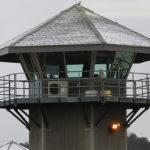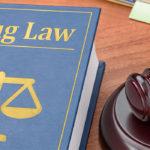NEW PALTZ- More than 130 people were arrested at the SUNY New Paltz Campus on Thursday evening after university officials say they ignored orders to disband a student-led encampment in protest the conflict in Gaza. Similar encampments and rallies were held at college campuses around the nation, including at Vassar College in Poughkeepsie.
When the protest first began on Wednesday afternoon, approximately 70 people occupied an area on the college’s Parker Quad they dubbed the “Liberation Zone.” The area was marked off by a rope tied around several trees and the protest quickly grew to several hundred students and faculty members. By 7:20 p.m. on Wednesday evening Darrell Wheeler, the college’s president, emailed students, faculty, and staff.
“By now word will have reached many of you about an unsanctioned group, including some New Paltz students, that has set up tents and other temporary structures on campus in an act of demonstration, following the example of similar demonstrations that have taken place at colleges and universities across the U.S. this spring,” the email read. “Our every aspiration is to achieve these goals through open dialogue with demonstrators, and we intend to exhaust all options to arrive at resolution with zero people injured and zero people arrested. We are also duty-bound to protect the safety of the campus and all of its constituents.”
Wheeler said the primary goal was the removal of tents that had been setup on the quad. He referenced the college’s student handbook which states, “no person shall erect a tent, lean-to, or other temporary structure with the intent to utilize such for overnight occupancy” on campus grounds without prior authorization.
On Thursday university officials first gave protesters a deadline of 7 p.m. and then extended it until 9 p.m. to disband their encampment. College administration promised students amnesty if they complied and while many did not leave, tents which had previously been erected, were taken down.
At around 10 p.m. the police presence grew on campus. Around 30 police cars had been staged in the commuter parking lot outside of the college’s Ridgeview Hall and shortly after, an announcement came from a police car with a loud speaker. Police warned that any protesters who failed to disband and leave Parker Quad would be arrested.
Approximately 20 minutes later, with hundreds of protesters still in Parker Quad, more than 60 State Police officers wearing riot helmets and carrying wooden batons began marching in a line across the quad. As police began to sweep the quad, a helicopter and drones flew overhead.
One witness, who chose not to be identified, said that the first group of police were met by a second group of officers that were outfitted in full riot gear. The witness said officers could be observed striking their batons on their shin guards in unison to intimidate the protesters.
Once the police reached the quad’s hill where around 200 protesters were sitting on the ground, arms linked, the witness describes a series of violent arrests. Chaotic videos posted to social media from Parker Quad show police apprehending protesters, pulling them down to the ground, and using their batons to separate students who were linked together. After protesters were separated, police could be seen carrying and dragging them away and detaining them using zip ties.
The police action came to an end after 12 a.m. Friday morning when the protesters had finally been disbanded. According to SUNY, 72 of the protesters arrested were students, 11 were alumni, and three were current or former employees.
Reports and photographs of students covered in bruises from police batons and flex cuffs circled on the internet over the weekend, with many calling the response unnecessary, violent, and brutal given the difference between the protest at SUNY New Paltz and others that have ended in police action. Unlike at Columbia University where protesters took over a building, forcing the college to shift to remote learning, New Paltz’s protest was entirely outdoors and protesters complied with the college’s demand to dismantle tents.
A student, who also did not wish to be identified, did not participate in the protest but watched during the police intervention. He described the college’s response to the protest as, “a total disaster.”
“People are afraid,” he said. “Everyone was peaceful the whole time–they were singing, talking, not bothering anyone. Our classes were not interrupted. There was no reason for the police to come the way they did. The atmosphere on campus is terrible.”
Following the arrests, Wheeler wrote another email to the college community. “I understand that some in our community will hold me personally and solely responsible for tonight’s events. I will have to integrate and accept that, and yet I remain steadfast in my belief that this action is necessary to protect the future of our institution and all its constituents,” the email read in part.
While Wheeler took responsibility for authorizing police action, New Paltz was not the only SUNY campus on which protests were disbanded by police. Last week, similar encampments ended after two days with police intervention at SUNY Purchase where 70 were arrested, and SUNY Buffalo where 15 were taken into custody.
For her part, Governor Kathy Hochul said she supported student’s right to protest.
“Every American has a First Amendment right to peacefully protest and assemble and many students we know have very strong convictions, strong beliefs about what has taken them to protest,” said the governor. “We don’t have to agree with them. That’s not always how it is. But when actions cross over into vandalism, harassment, destruction of property, or even violence, then the line has been crossed.”
The chaotic events of Thursday evening are leaving several to wonder who and what lines were crossed, with some pointing fingers at the protesters and others pointing fingers at the police.
“Personally, I don’t think it was necessary,” said one student. “Everyone was peaceful and what happened was totally unnecessary–it was a peaceful protest that ended in violence, and it didn’t have to be that way.”








